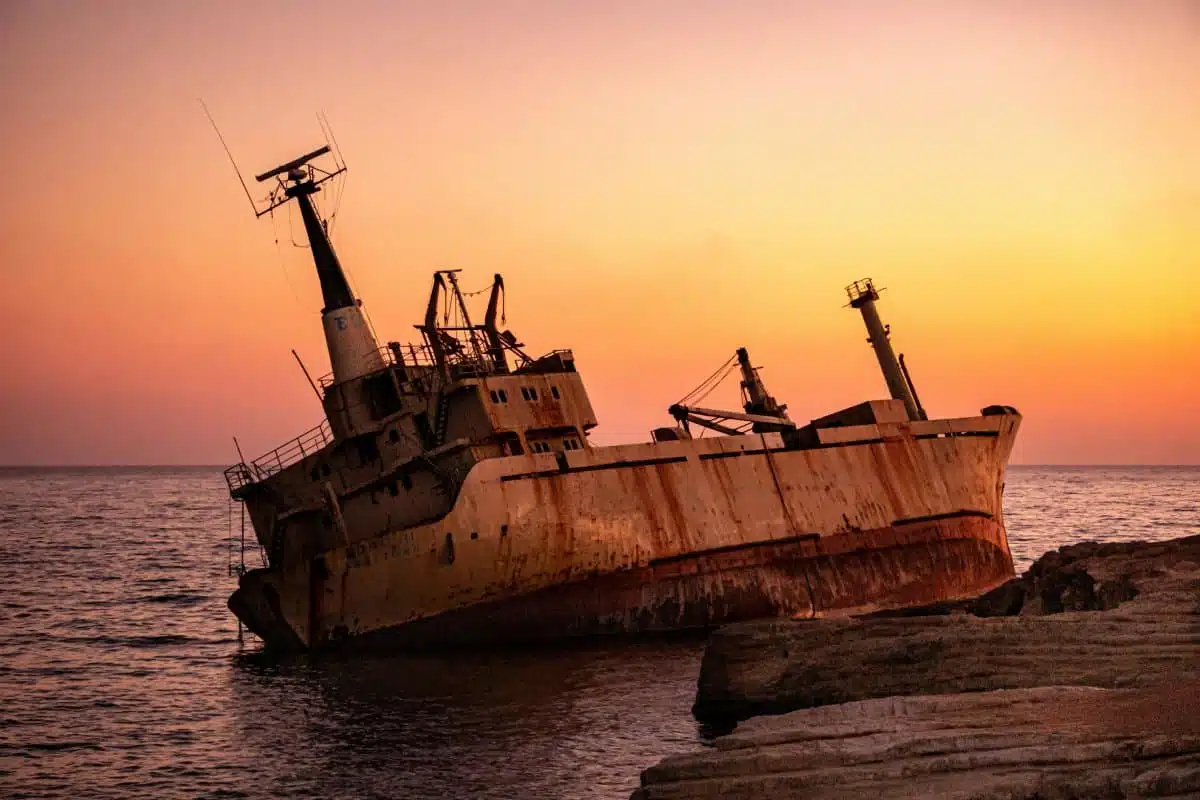Exploring shipwrecks usually conjures images of deep-sea diving and underwater adventures. However, numerous shipwrecks around the world offer the intrigue and history of sunken vessels without the need to don a wetsuit. From ships stranded on desolate beaches to those visible in shallow waters, these wrecks provide a unique glimpse into maritime history, accessible to everyone. This guide explores such shipwrecks, each telling its own story of adventure, tragedy, and the relentless force of nature, all observable from the comfort and dryness of land or shallow waters.
1. SS Maheno on Fraser Island, Australia
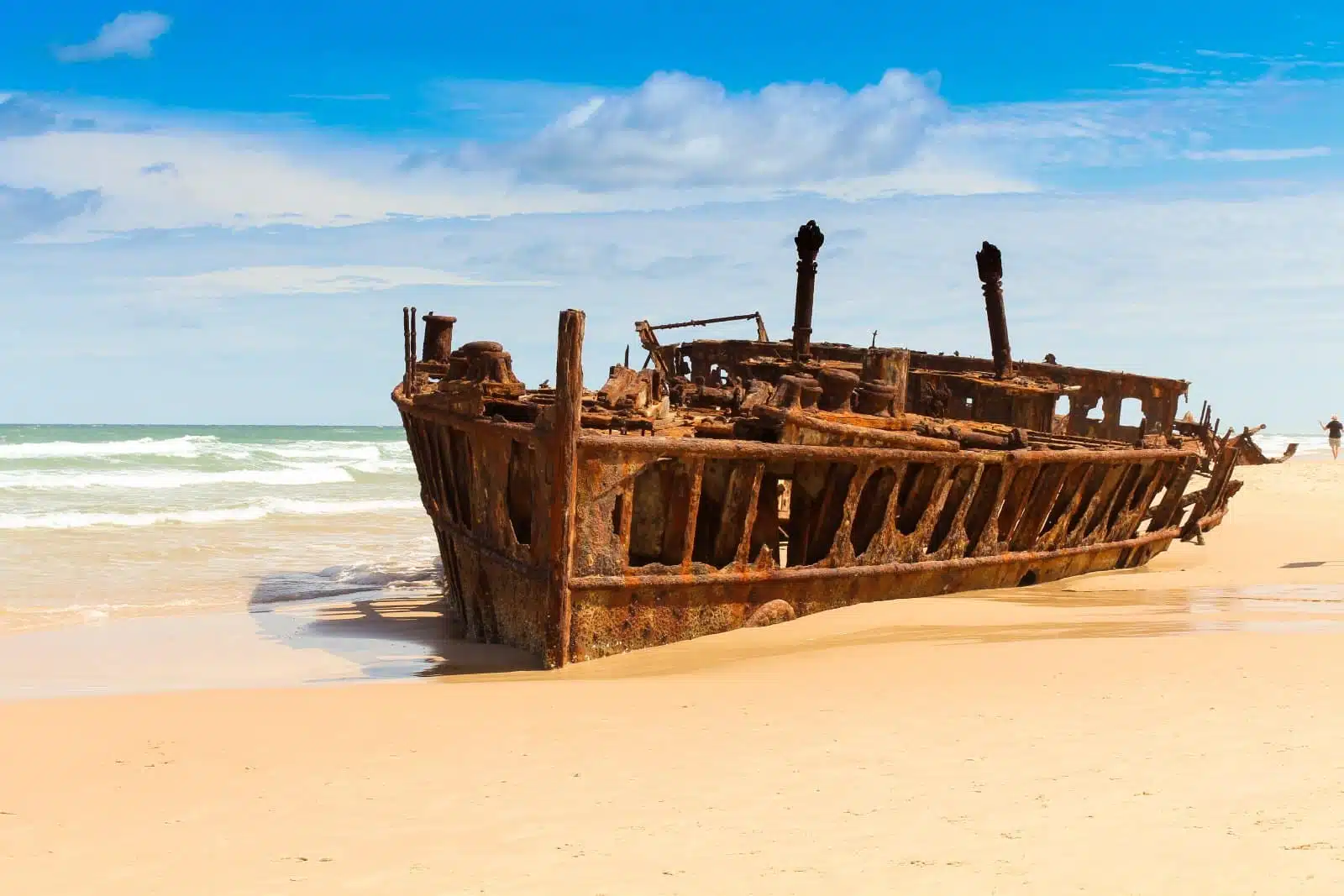
Image Credit: Shutterstock / Yannik Photography
The SS Maheno, a former ocean liner, and World War I hospital ship, met its fate on the shores of Fraser Island in 1935, stranded by a cyclone while being towed to a Japanese scrapyard. Today, its rusting hulk is a haunting yet fascinating landmark on the island’s eastern beach. The contrast of the corroded steel against the pristine sands and turquoise waters of the Coral Sea creates a striking scene, drawing visitors from around the globe. The ship’s history and dramatic end make the SS Maheno a must-see for anyone visiting Fraser Island.
Insider’s Tip: Visit at low tide when more of the wreck is exposed, offering a better view and photographic opportunities. Early morning or late afternoon light casts dramatic shadows, enhancing the wreck’s eerie beauty.
When to Travel: The best time to visit Fraser Island is from June to October, avoiding the peak of the Australian summer while enjoying mild weather.
How to Get There: Fly into Hervey Bay or Sunshine Coast airports, then take a ferry or a barge to Fraser Island. The SS Maheno is accessible by 4WD along Seventy-Five Mile Beach.
2. The Peter Iredale in Oregon, USA

Image Credit: Shutterstock / Gregory Johnston
The Peter Iredale ran aground on Clatsop Spit near Astoria, Oregon, in 1906, and its remains have become one of the most accessible shipwrecks in the United States. The skeletal frame of the four-masted steel barque is embedded in the sand, with its bow jutting out dramatically. The wreck is a reminder of the perilous journeys undertaken by maritime vessels and offers a tangible connection to the past for visitors. The surrounding area, part of Fort Stevens State Park, provides a scenic backdrop of beaches and forests, making it a popular spot for history enthusiasts and nature lovers.
Insider’s Tip: The wreck is most visible and photogenic during sunset when the fading light illuminates the metal structure against the backdrop of the Pacific Ocean.
When to Travel: Summer months, from June to September, offer the best weather for visiting the Oregon coast, with less fog and warmer temperatures.
How to Get There: The nearest major airport is in Portland, Oregon. It’s approximately a 2-hour drive from Portland to Fort Stevens State Park, where the wreck is located just off the beach.
3. The Dimitrios in Gythio, Greece
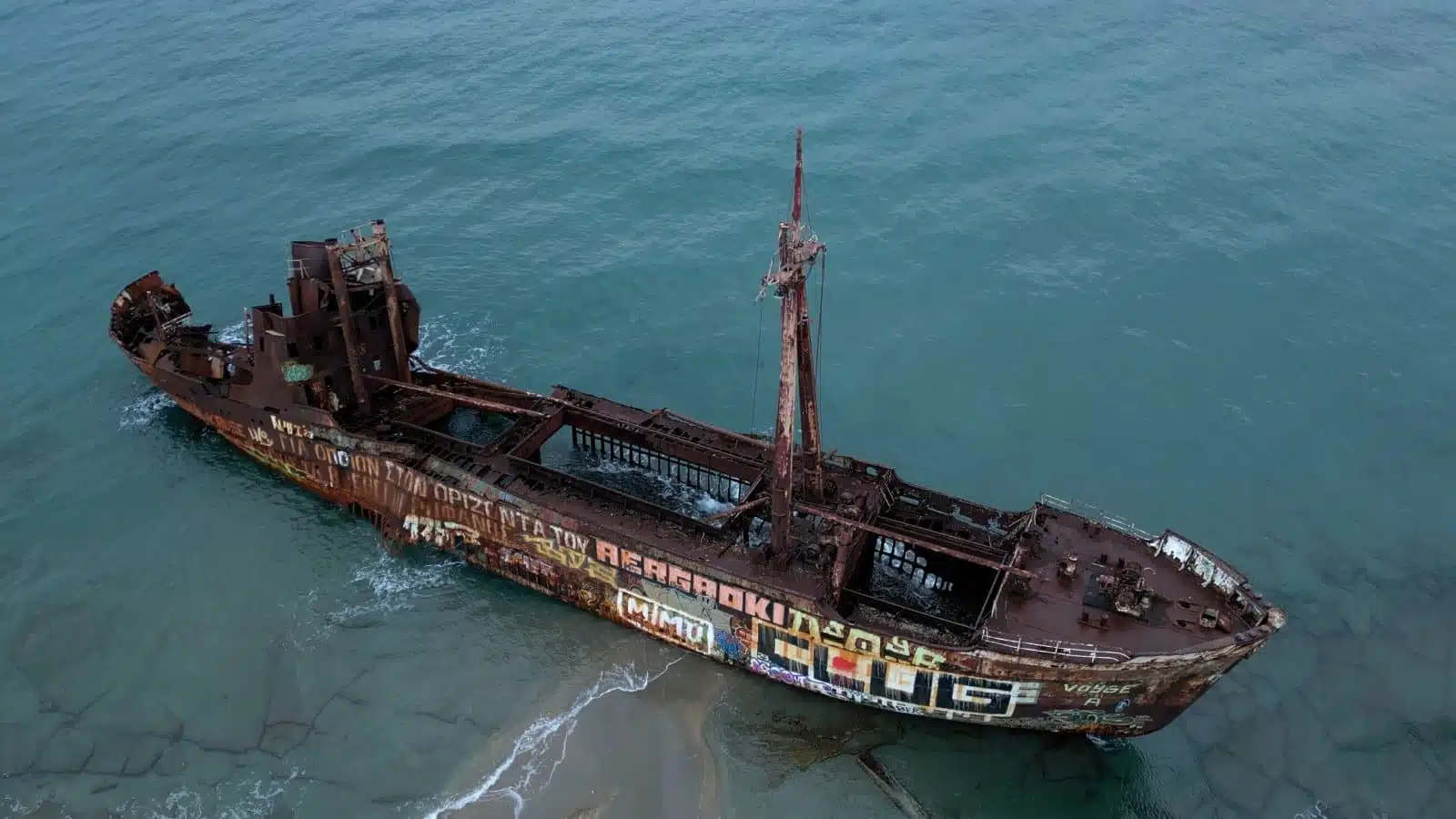
Image Credit: Shutterstock / DELBO ANDREA
The Dimitrios, a small freighter rumored to have been involved in cigarette smuggling, washed ashore on Valtaki Beach near Gythio, Greece, in the 1980s. The ship’s mysterious origins and the dramatic setting against the backdrop of the Mediterranean Sea make it a captivating sight. The wreck is easily accessible from the beach, allowing visitors to walk up to and around the rusting vessel. The clear blue waters and the surrounding landscape of the Mani Peninsula add to the allure, making the Dimitrios not just a shipwreck but a part of the region’s scenic beauty.
Insider’s Tip: Visit during the early morning to have the site mostly to yourself and to capture the best light for photographs. The calm morning sea also reflects the wreck beautifully.
When to Travel: The best time to visit is from May to October when the weather is warm and the sea is calm, making it ideal for swimming and beach activities.
How to Get There: The nearest major city is Kalamata, which has an airport. From Kalamata, Gythio is about a 2-hour drive. Valtaki Beach is a short distance from Gythio and is easily accessible by car.
4. The Eduard Bohlen in Namibia
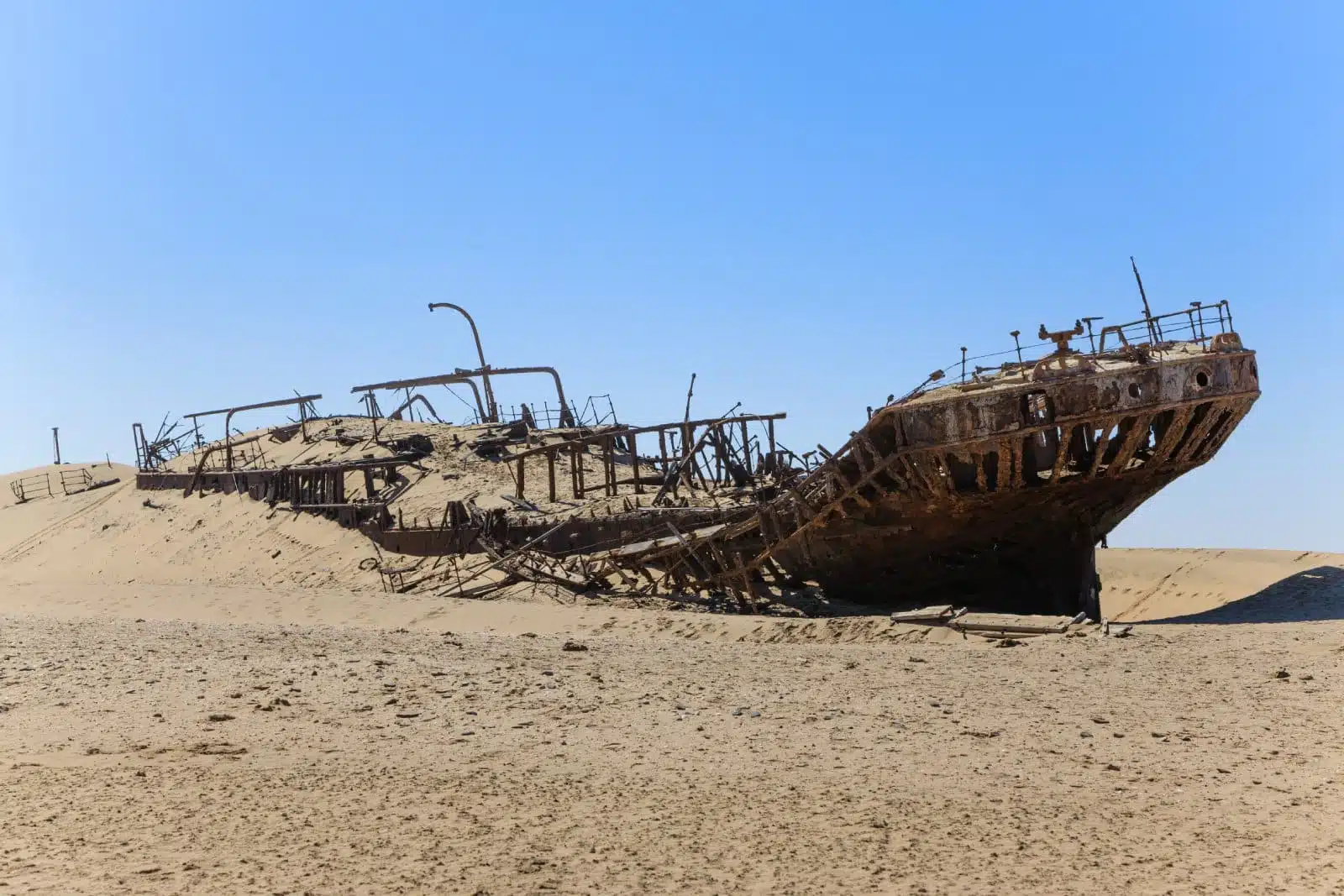
Image Credit: Shutterstock / Radek Borovka
The Eduard Bohlen, a German cargo ship, met its end in 1909, stranded in the Namib Desert. This wreck’s location makes it extraordinary – it lies inland, a considerable distance from the shoreline, encapsulated by the shifting sands of one of the world’s oldest deserts. Seeing a ship amidst the dunes is surreal, offering a reminder of the desert’s encroachment on the sea. This juxtaposition of maritime and desert landscapes gives visitors a unique and otherworldly experience.
Insider’s Tip: Due to the remote location, consider joining a guided tour from Walvis Bay or Swakopmund. These tours often include other attractions in the Namib-Naukluft National Park, making for a comprehensive desert adventure.
When to Travel: The cooler months from May to September are ideal for visiting the desert, avoiding the extreme heat of the summer months.
How to Get There: The closest international airport is in Windhoek, the capital of Namibia. From Windhoek, it’s a scenic drive to Swakopmund or Walvis Bay, where you can arrange a tour to the shipwreck in the desert.
5. SS Ayrfield in Homebush Bay, Australia
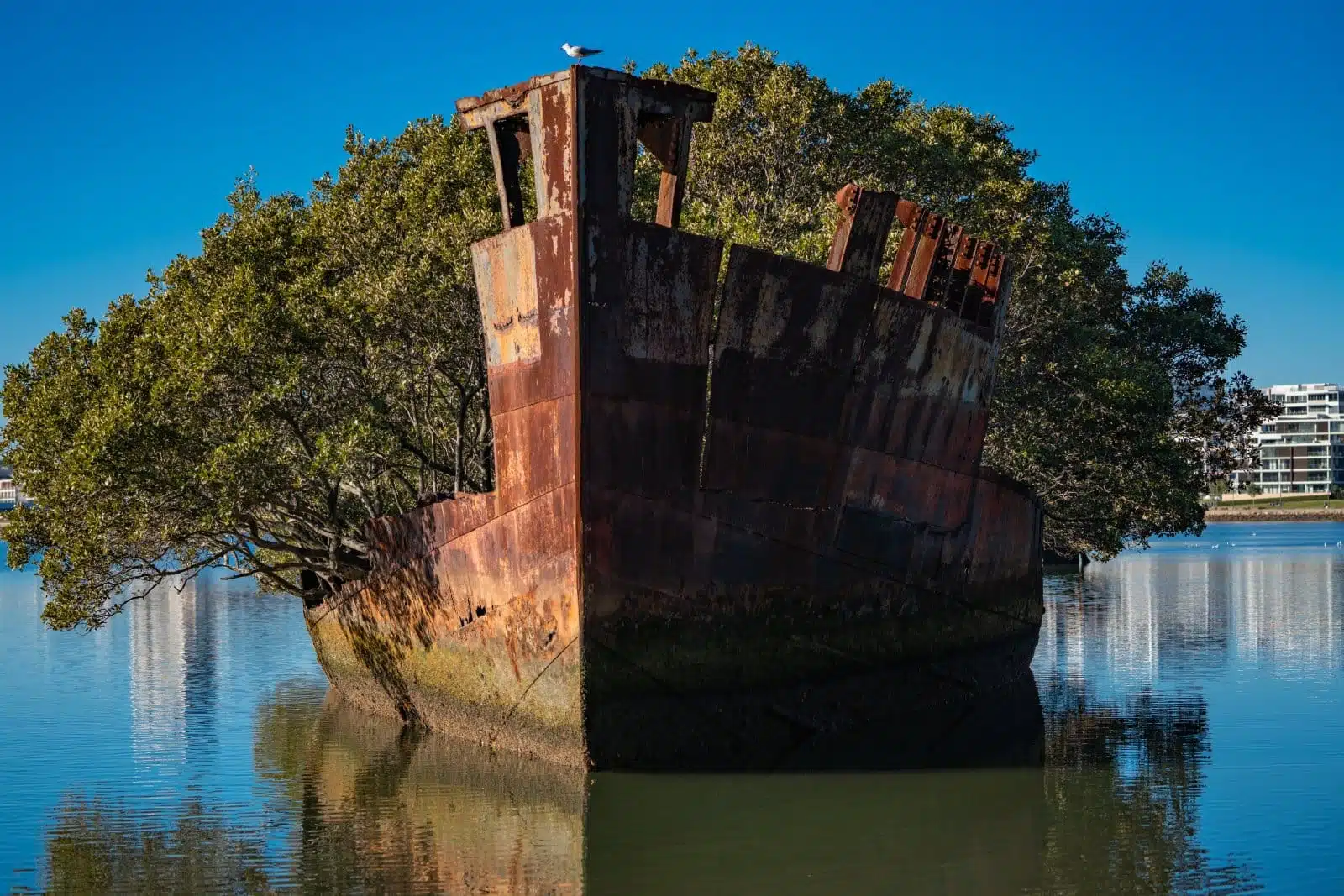
Image Credit: Shutterstock / Mariia Zaporozhtseva
The SS Ayrfield, a relic of the Second World War, now rests in the shallow waters of Homebush Bay, Sydney, transformed into a floating forest. Originally built in 1911 and used to transport supplies during the war, this ship was decommissioned and sent to Homebush Bay, which served as a ship-breaking yard. Over the years, mangrove trees have taken root in the rusted hull, creating a striking image of resilience and rebirth. The SS Ayrfield is easily visible from the shore, making it a popular subject for photographers and a reminder of nature’s power to reclaim human-made structures.
Insider’s Tip: Visit at sunrise or sunset for the most dramatic lighting. The golden hours cast a warm glow on the ship and its green inhabitants, offering a serene and somewhat surreal viewing experience.
When to Travel: Sydney’s mild climate makes the SS Ayrfield accessible year-round, but spring (September to November) and autumn (March to May) offer the most comfortable temperatures for exploring the area.
How to Get There: Homebush Bay is located in the western suburbs of Sydney. It’s easily accessible by car or public transport from the city center, with nearby parking and walking paths leading to the bay.
6. The Garðar BA 64 in Iceland
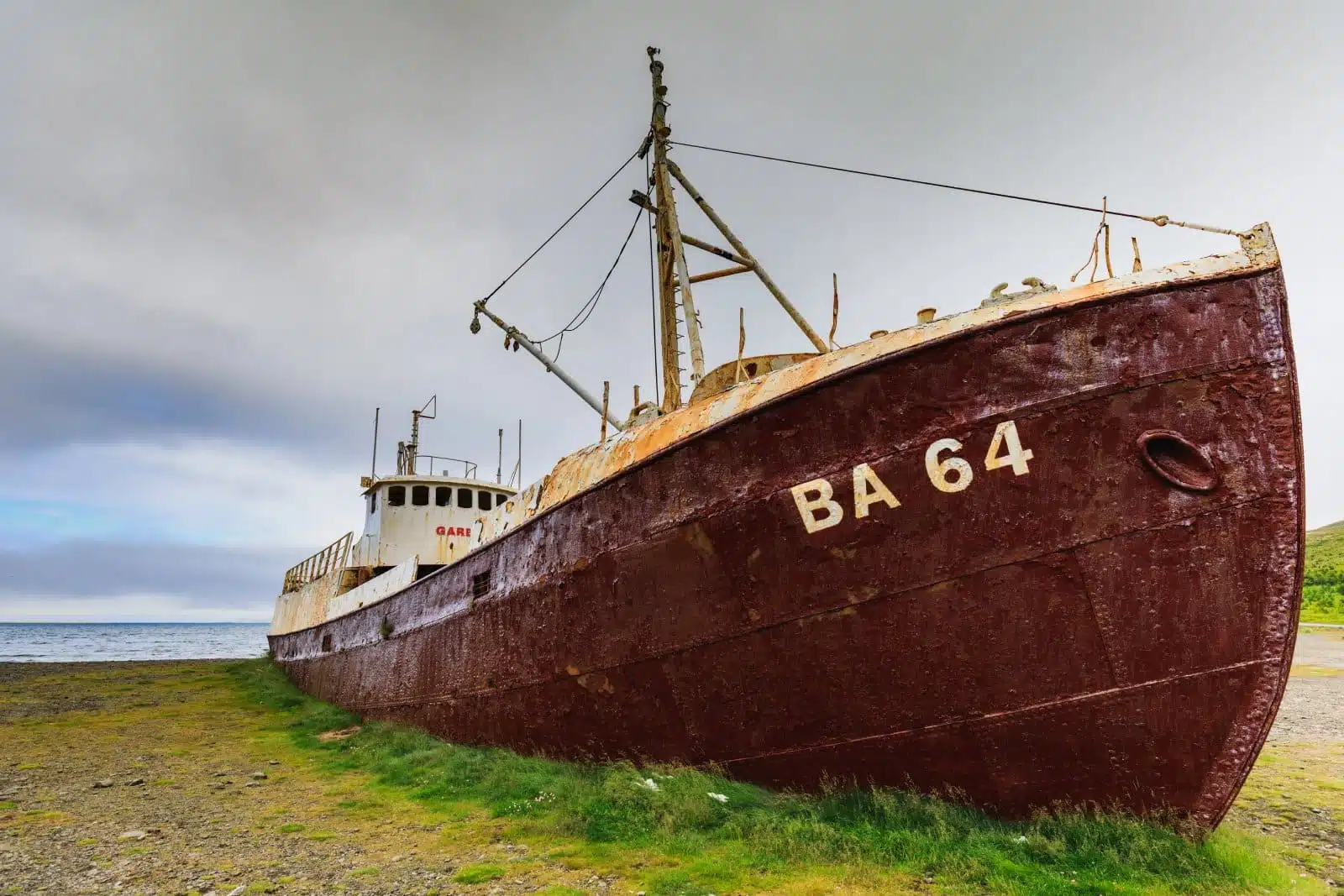
Image Credit: Shutterstock / Michael Zech Fotografie
The Garðar BA 64, beached on the Snaefellsnes Peninsula in Iceland, is the oldest steel ship in the country, grounded there in 1981 after serving as a whaling and fishing vessel. Its rusting hulk against the dramatic Icelandic landscape of mountains, lava fields, and the North Atlantic’s blue waters offers a stark and beautiful contrast. The isolation of the site and the rugged nature make the Garðar BA 64 a gateway to experiencing Iceland’s wild beauty.
Insider’s Tip: Wear sturdy hiking boots and be prepared for changeable weather, even in summer. The terrain around the wreck can be uneven and slippery.
When to Travel: Summer, from June to August, offers the mildest weather and the longest days, ideal for exploring Iceland’s natural wonders.
How to Get There: The Snaefellsnes Peninsula is about a two-hour drive from Reykjavik. The Garðar BA 64 is located near the road leading to the Hellissandur village, accessible by a short hike from the main road.
7 The American Star in Fuerteventura, Canary Islands
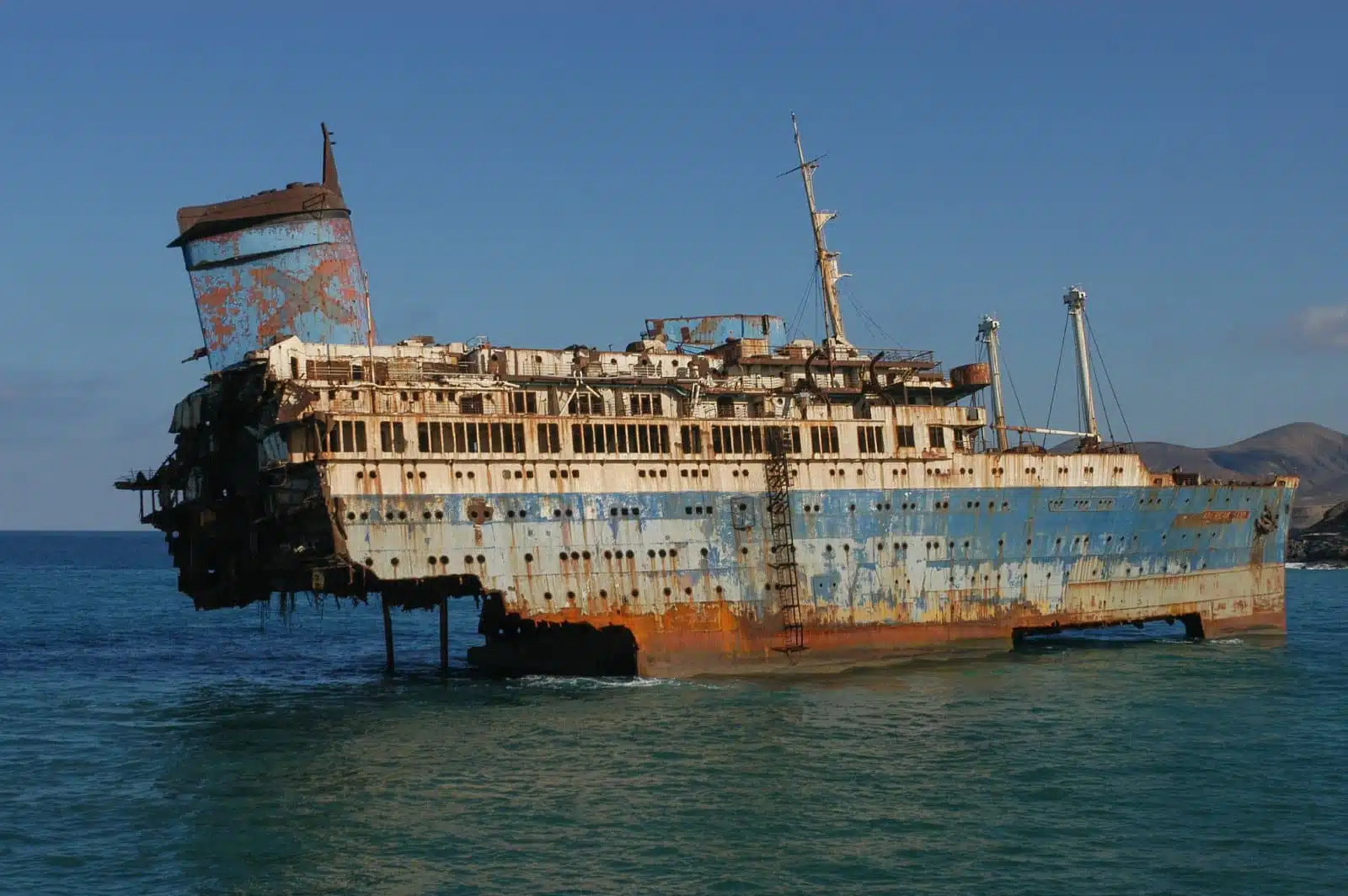
Image Credit: Shutterstock / Salvador Aznar
The American Star, originally known as the SS America, was a luxury ocean liner and cruise ship that met its fate off the coast of Fuerteventura in the Canary Islands in 1994. While being towed to Thailand to be converted into a hotel ship, a storm broke the tow lines, and the ship ran aground on the west coast of Fuerteventura at Playa de Garcey. Over the years, the wreck became a striking feature against the backdrop of the Atlantic Ocean, gradually disintegrating under the force of the waves. Although much of the ship has now collapsed into the sea, the site remains a point of interest for its dramatic history and the stark beauty of its setting.
Insider’s Tip: The wreck is best viewed from the shore, as the surrounding waters can be treacherous. Bring binoculars for a closer look and to observe the diverse birdlife that inhabits the area.
When to Travel: Visit from May to September for the best weather conditions, with warmer temperatures and less chance of fog obscuring the view.
How to Get There: Fuerteventura is accessible by air, with flights arriving at Fuerteventura Airport. From there, Playa de Garcey is best reached by car, with a journey through some of the island’s scenic landscapes.
8. The MV Panagiotis at Navagio Beach, Greece
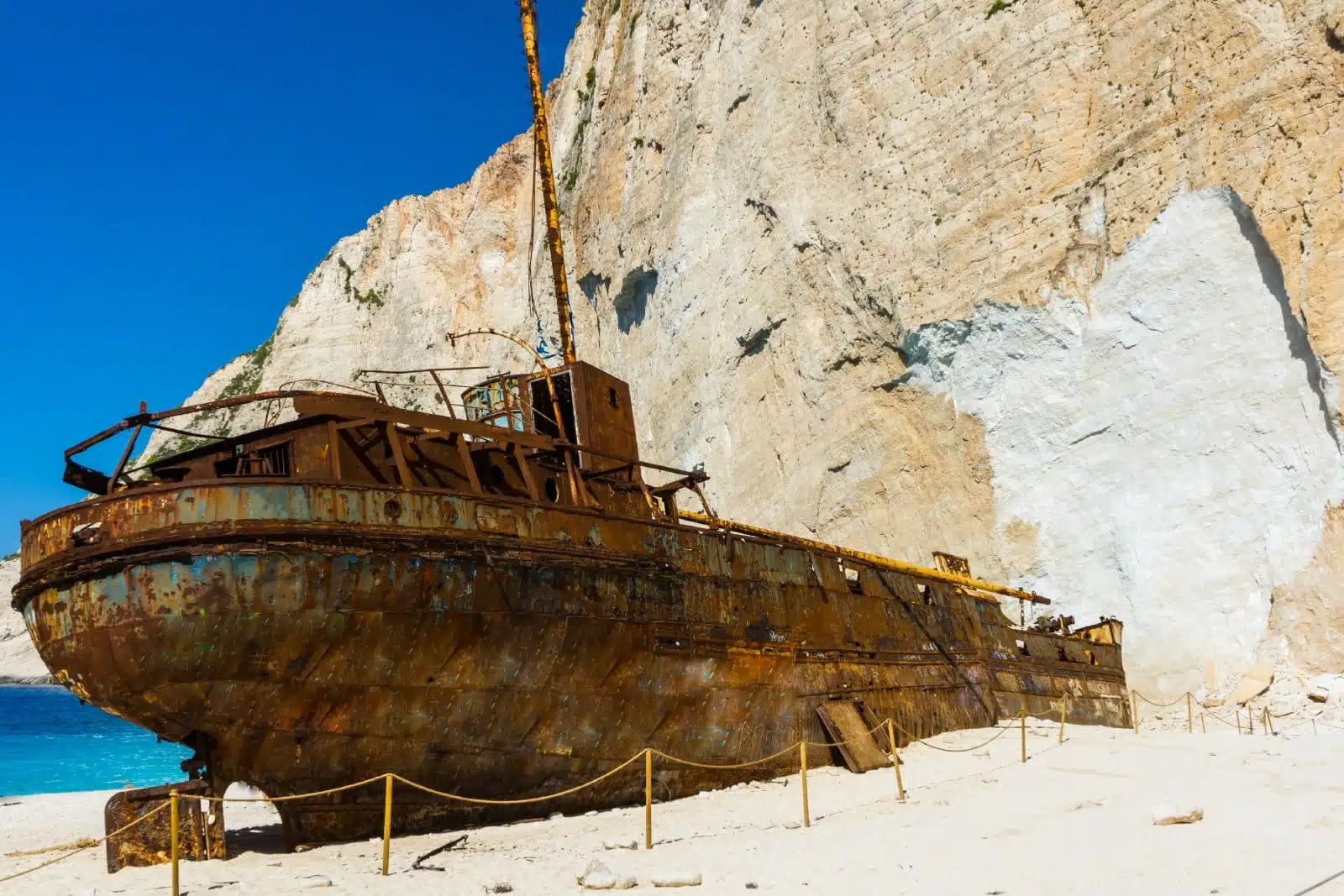
Image Credit: Shutterstock / Simon Dux Media
The MV Panagiotis, a freightliner that ran aground in 1980, rests in the white sands of Navagio Beach on the island of Zakynthos, Greece. Also known as Shipwreck Beach, this site is one of the most photographed in Greece, famed for its crystal-clear turquoise waters, towering limestone cliffs, and the rusting hulk of the MV Panagiotis, adding a touch of mystery. The beach is accessible only by boat, adding to the sense of adventure. Legends of smuggling contribute to the ship’s mystique, though its true history is more mundane, involving a storm and engine failure.
Insider’s Tip: Early morning boat tours offer the calmest seas and the chance to experience the beach’s beauty before the crowds arrive. Some tours also explore the surrounding sea caves.
When to Travel: The best time to visit Navagio Beach is from late spring to early autumn (May to October), when the weather is ideal for boat trips and swimming.
How to Get There: Zakynthos is accessible by air or ferry. Once on the island, tour operators offer boat trips to Navagio Beach from Porto Vromi, Agios Nikolaos, and Zakynthos Town.
9. The Vasa in Stockholm, Sweden
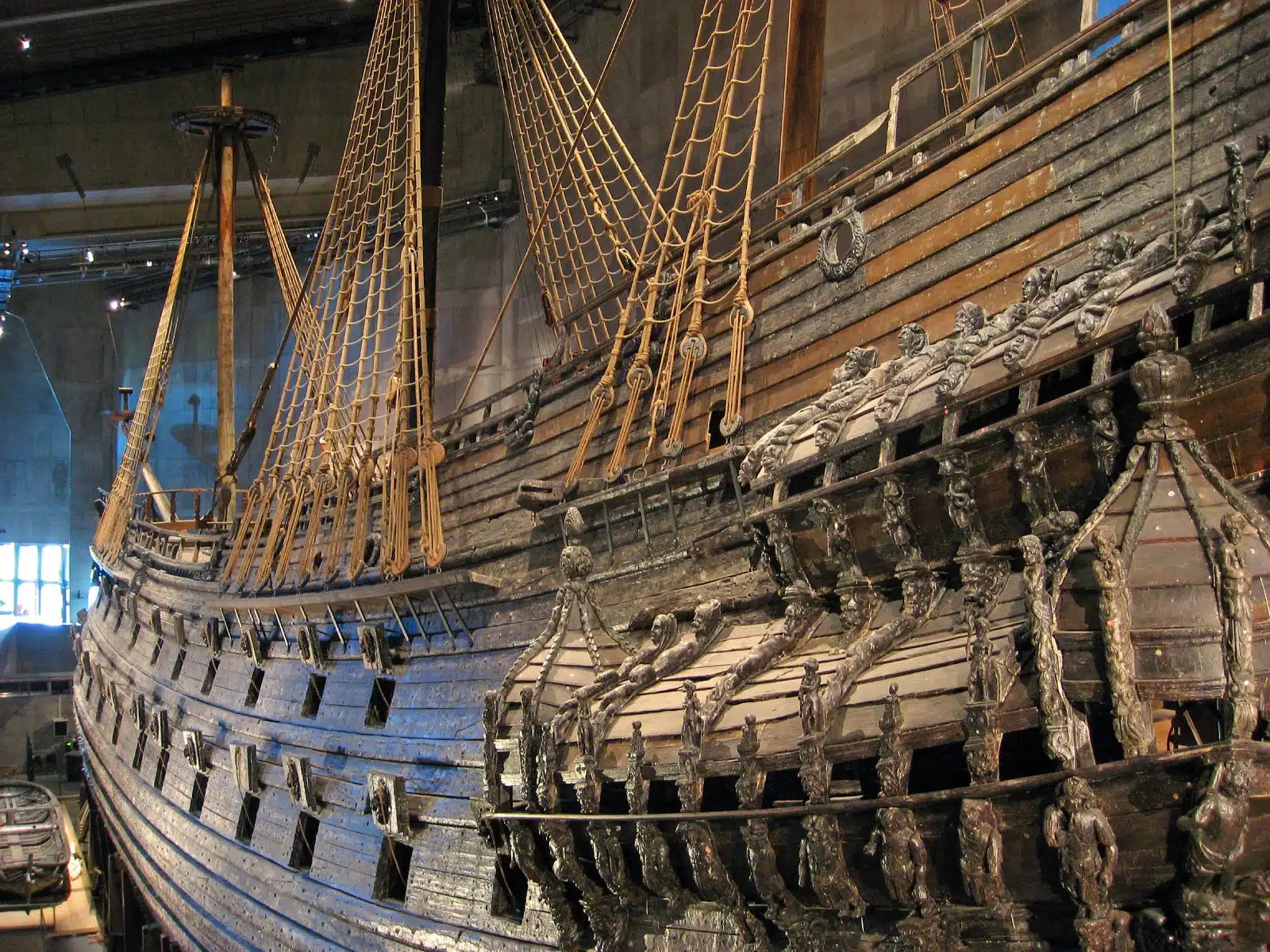
Image Credit: Shutterstock / Willem Tims
The Vasa is a 17th-century Swedish warship that famously sank on its maiden voyage in 1628, just minutes after setting sail from Stockholm. It remained underwater for over 300 years before being salvaged in 1961 in a remarkably well-preserved state. Today, the Vasa is housed in the Vasa Museum in Stockholm, offering visitors a unique opportunity to explore a nearly intact ship from the early modern period. The museum provides insights into 17th-century maritime warfare, shipbuilding, and everyday life on board. The Vasa’s intricate carvings and the personal belongings of its crew members bring the era to life, making it a fascinating visit for history enthusiasts and casual visitors alike.
Insider’s Tip: Don’t miss the museum’s guided tours, which offer in-depth stories about the ship’s history, its recovery, and the conservation efforts that have allowed it to be displayed today.
When to Travel: Stockholm is charming year-round, but the best time to visit is during the summer, from June to August, when the city enjoys its warmest weather.
How to Get There: The Vasa Museum is located on the island of Djurgården in Stockholm and is easily accessible by public transport, bicycle, or on foot from the city center.
The Bottom Line
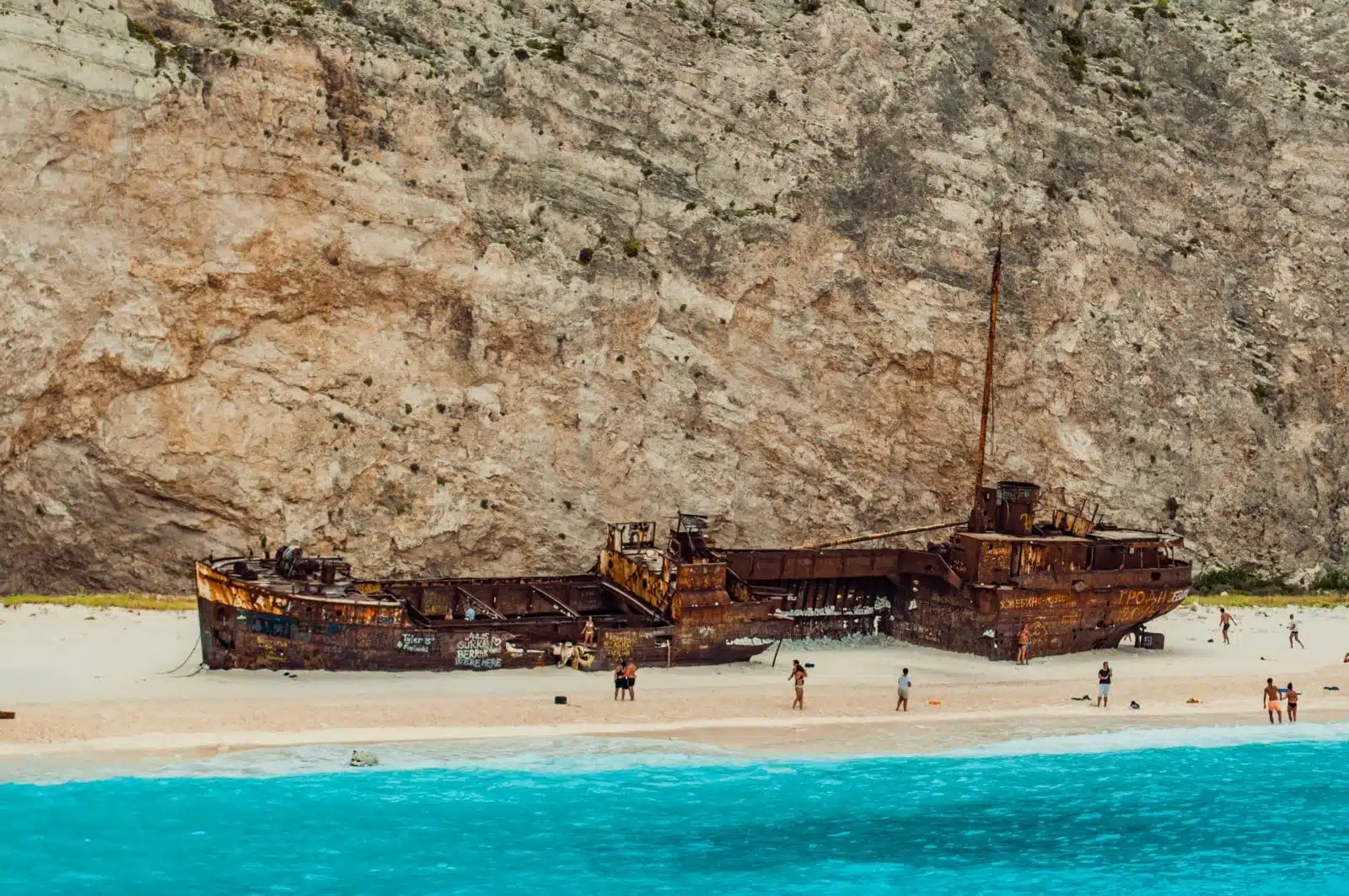
Image Credit: Pexels / Hristo Fidanov
The allure of shipwrecks extends beyond the depths of the sea, reaching into the hearts of those who stand on the shore gazing upon these time capsules of maritime history. Each wreck tells a story of adventure, tragedy, and the relentless passage of time, offering a unique window into the past for those willing to explore. Whether it’s the eerie beauty of the SS Ayrfield’s floating forest, the stark contrast of the Maheno against Fraser Island’s sands, or the haunting silhouette of the Peter Iredale against the Oregon sky, these accessible wrecks provide a tangible connection to the tales of the sea. As you embark on your journey to these remarkable sites, remember that each visit is not just a step through history but a moment of reflection on the power of nature and the resilience of human endeavor.
More From The Green Voyage
Top 10 Trending Travel Destinations 2024
6 Essential Banking Apps for International Travel – Managing Your Finances on the Go
Traveling With Kids – 10 Tips to Create Memorable Family Holidays
The post 10 Shipwrecks You Can See Without Getting Your Feet Wet 2024 first appeared on The Green Voyage.
Featured Image Credit: Pexels / Katalin RHorvát.
For transparency, this content was partly developed with AI assistance and carefully curated by an experienced editor to be informative and ensure accuracy.
Tips for Trip Success
Book Your Flight
Find an inexpensive flight by using Kayak, a favorite of ours because it regularly returns less expensive flight options from a variety of airlines.
Book Your Hotel or Special Accommodation
We are big fans of Booking.com. We like their review system and photos. If we want to see more reviews and additional booking options, we go to Expedia.
You Need Travel Insurance!
Good travel insurance means having total peace of mind. Travel insurance protects you when your medical insurance often will not and better than what you get from your credit card. It will provide comprehensive coverage should you need medical treatment or return to the United States, compensation for trip interruption, baggage loss, and other situations.Find the Perfect Insurance Plan for Your Trip
